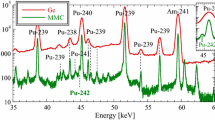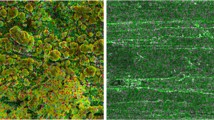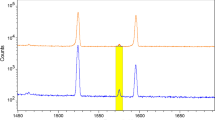Abstract
Microcalorimeters with embedded radioisotopes are an emerging category of sensor with advantages over existing methods for isotopic analysis of trace-level nuclear materials. For each nuclear decay, the energy of all decay products captured by the absorber (alpha particles, gamma rays, X-rays, electrons, daughter nuclei, etc.) is measured in one pulse. For alpha-decaying isotopes, this gives a measurement of the total nuclear reaction energy (Q value) and the spectra consist of well-separated, narrow peaks. We have demonstrated a simple mechanical alloying process to create an absorber structure consisting of a gold matrix with small inclusions of a radioactive sample. This absorber structure provides an optimized energy thermalization environment, resulting in high-resolution spectra with minimal tailing. We have applied this process to the analysis of particles collected from the surface of a plutonium metal certified reference material (CRM-126A from New Brunswick Laboratory) and demonstrated isotopic analysis by microcalorimeter Q value spectroscopy. Energy resolution from the Gaussian component of a Bortels function fit was 1.3 keV FWHM at 5244 keV. The collected particles were integrated directly into the detector absorber without any chemical processing. The \(^{238}\)Pu/\(^{239}\)Pu and \(^{240}\)Pu/\(^{239}\)Pu mass ratios were measured and the results confirmed against the certificate of analysis for the reference material. We also demonstrated inter-element analysis capability by measuring the \(^{241}\)Am/\(^{239}\)Pu mass ratio.




Similar content being viewed by others
References
J.J. Bellucci et al., Anal. Chem. 85, 4195–4198 (2013)
H. Blix, Disarming Iraq (Bloomsbury Publish Plc, London, 2005)
IAEA-TECDOC-1663, International Atomic Energy Agency (2011) http://www.pub.iaea.org/MTCD/publications/PDF/TE_1663_web.pdf
K.J. Moody, I.D. Hutcheon, P.M. Grant, Nuclear Forensic Analysis (CRC Press, Boca Raton, 2005)
A.S. Hoover et al., Anal. Chem. 87, 3996–4000 (2015)
Y.S. Jang et al., Appl. Radiat. Isot. 70, 2255–2259 (2012)
NBL CRM 126-A Certificate of Analysis, U.S. Department of Energy, New Brunswick Laboratory, Argonne, Illinois, June 2004
M.P. Croce et al., IEEE Trans. Appl. Supercond. 23(3), 1602605 (2013)
G. Bortels, P. Collaers, Appl. Rad. Isot. 38, 831–837 (1987)
Acknowledgments
We gratefully acknowledge the support of the U.S. Department of Energy, National Nuclear Security Agency, Office of Defense Nuclear Nonproliferation.
Author information
Authors and Affiliations
Corresponding author
Rights and permissions
About this article
Cite this article
Croce, M.P., Hoover, A.S., Rabin, M.W. et al. Quantitative Analysis of Plutonium Content in Particles Collected from a Certified Reference Material by Total Nuclear Reaction Energy (Q Value) Spectroscopy. J Low Temp Phys 184, 938–943 (2016). https://doi.org/10.1007/s10909-016-1595-8
Received:
Accepted:
Published:
Issue Date:
DOI: https://doi.org/10.1007/s10909-016-1595-8




